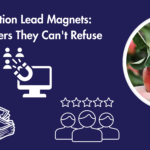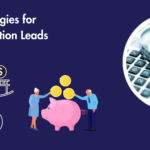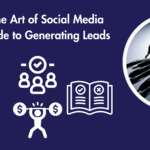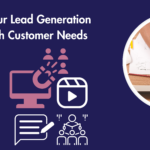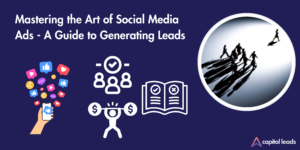What is a Lead Generation Strategy?
A lead generation strategy is a strategy or plan to encourage prospective customers to share their contact details with you.
This is along with consent to receive marketing or sales messages – turning them into potential customers or ‘leads’
A good lead generation strategy allows you to:
- Fill your sales funnel
- Build an email contact list
- Identify the highest-quality leads
- Tailor your marketing and sales initiatives
With this you can also collect and analyse overall data from leads. Help you gain valuable insights into your target audience’s demographics, preferences, and behaviours.
The biggest point of lead generation is to help you get more paying customers.
Improve Lead Generation Landing Pages
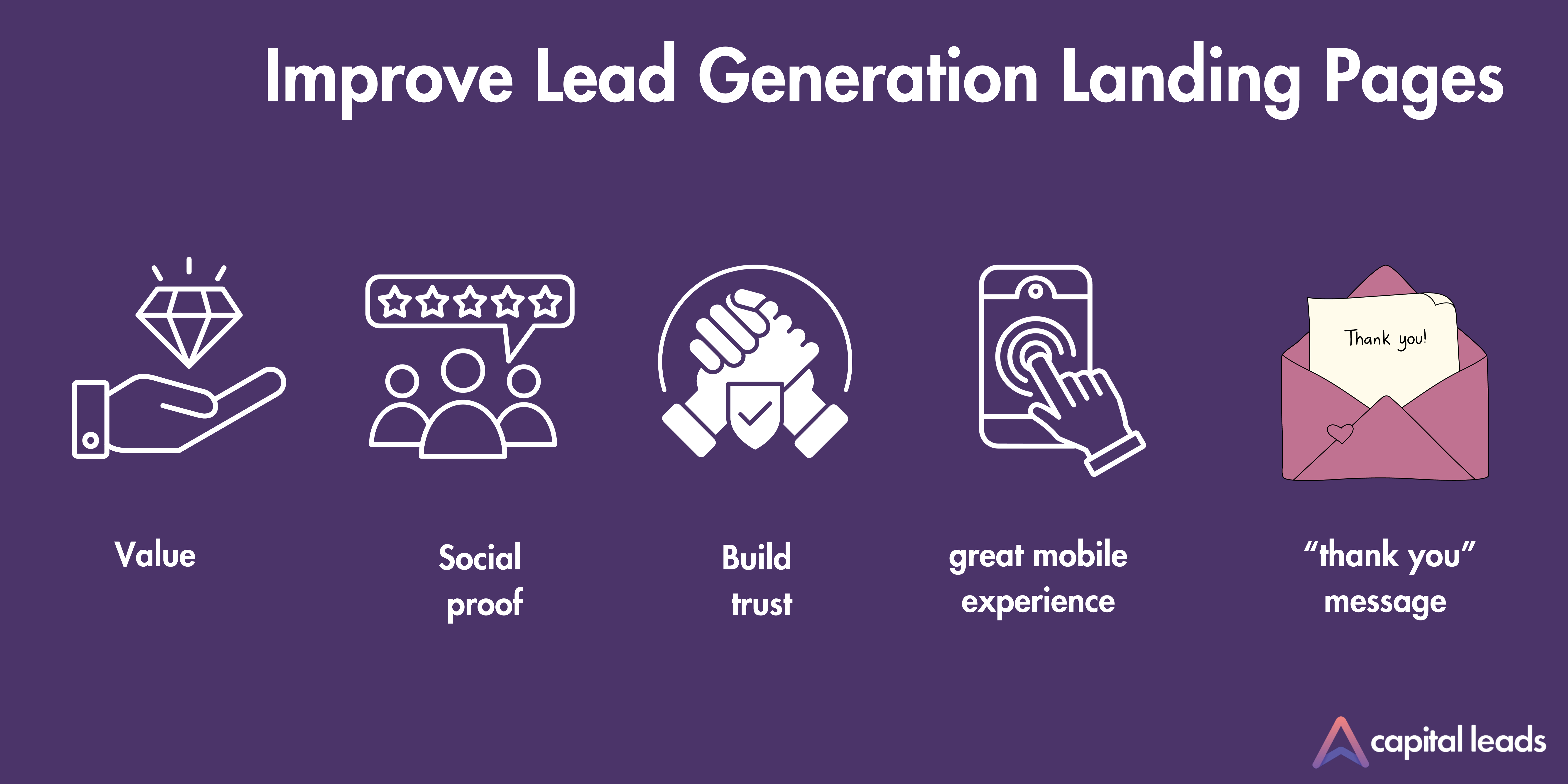
In the online world, a landing page is like a shop’s front window. If it looks good and offers what people want, they step in.
For businesses, a well-made landing page can turn website visitors into potential customers or leads. So, improving these pages is important if we want more people to show interest in what we offer. Let’s look at how to make these landing pages better for getting more leads.
Communicate a clear value proposition
Explain to prospective customers about how sharing their contact details with us will give benefit to them.
Provide social proof
Use existing customer testimonials, review and ratings to plant the confidence in prospective customers.
Build trust
Make it extra clear how you will use and at the same time protect customers’ informations.
Deliver a great mobile experience
Make sure your landing page works well on every device type: PC, Laptop Tablet and mobile phone. Oftentimes a landing page works on laptop but looks messed up on mobile phone, make sure you test it before making it live.
Display a “thank you” message
Thank prospective customers for submissions and let them know what’s next for them.
Optimise Lead Generation Forms
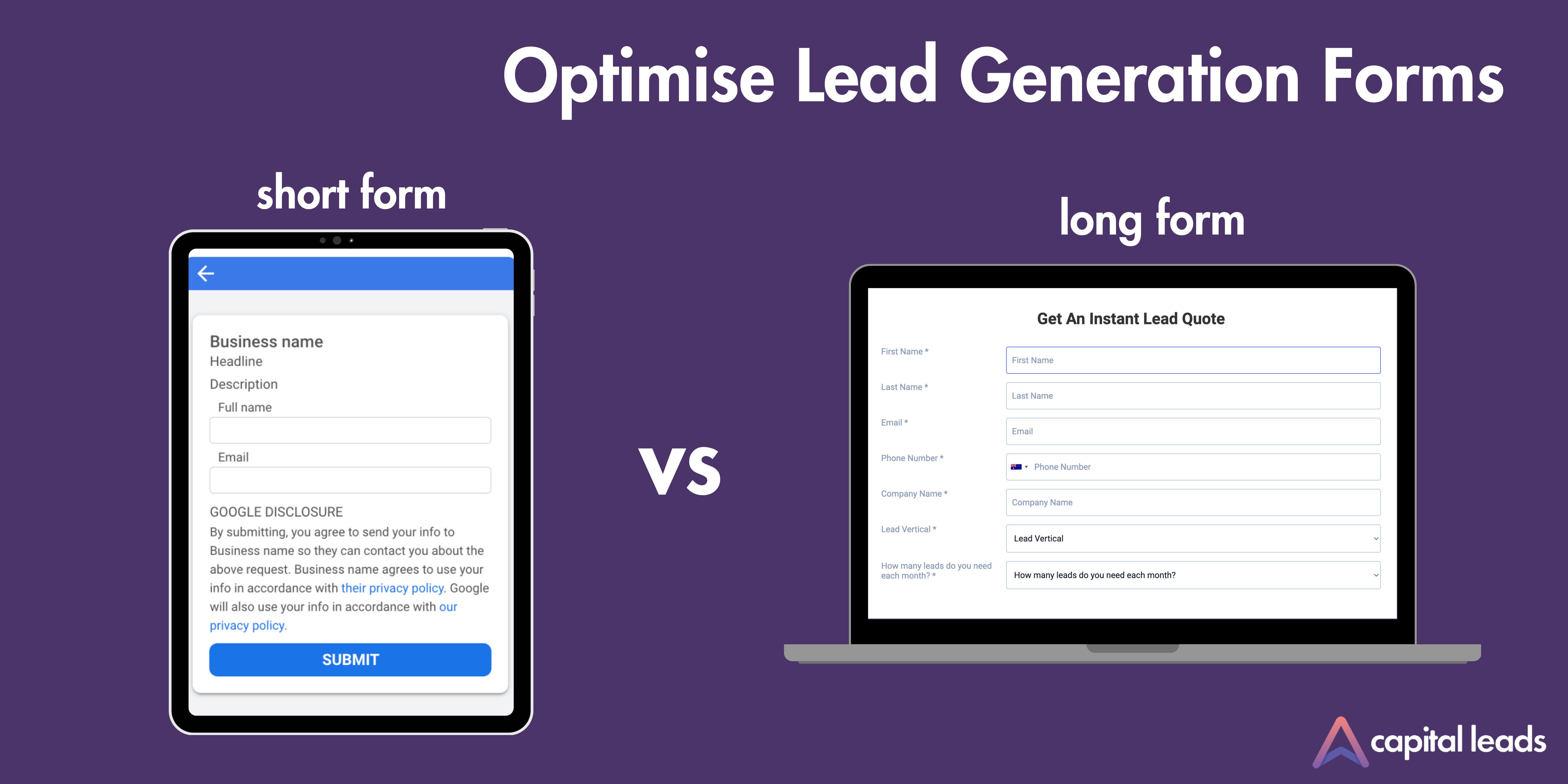
Lead generation forms gather information about potential customers. They’re a key part of many campaigns, so they need to be done correctly.
First, decide what details you want from users. Try to balance getting enough information without asking too much.
Short forms are fast and simple for users to complete. This can lead to more people filling them out.
Longer forms help get rid of less interested leads a.k.a low quality leads. Since more effort needed to fill out the form, only really interested people would fill it in.
They also gather more details, which can help your marketing and sales. Plus, you can use this information to tailor your messages.
Remember, the earlier your audience is in their journey with you, the shorter the form should be.
If people are really interested in what you offer, they’ll likely give more information.
Your form should grab attention and be simple enough to fill out.
Create Quality Content
Crafting content that aligns with your solar business and resonates with potential customers.
Engaging and informative content will not only grab attention but also build credibility. When visitors see the depth of your knowledge in solar energy, they recognize your expertise.
Example:
You are a solar company that regularly shares detailed blog posts, video installations, and webinars about maximising solar efficiency and the latest advancements in the industry.
Your potential customers who like this content are often inclined to subscribe to your newsletter and, over time, become loyal customers.
We call this kind of content, lead magnet.
Offer Live Chat Functionality
When people are browsing your site and looking for your products or services, they often have questions that would be much better if they could be answered right away.
This is where live chat makes all this process easier. It encourages people to communicate while they are on site, which means a lower chance they’ll leave due to a lack of clarity or information.
And don’t forget, live chat offers an opportunity to gather data from these potential leads.
During the conversation, prospects are encouraged to share their information and discuss their needs. Then, you can add all useful details to your customer relationship management (CRM) system.
Live chat approaches make visitors more comfortable with sharing their details. It also allows you to quickly solve any concerns that are holding them back from making the purchase.
Example:
You own a solar energy company. Potential customers browse your website and reach out via live chat with inquiries about solar panels.
They have questions about the longevity, efficiency, and installation of the solar panels.
By engaging in these real-time conversations, you could capture key details like the customer’s location, energy requirements, and budget.
This valuable information will then feed into your CRM, for your team to send customised offers and solutions.
Run Lead Generation Ads
Lead generation ads are online ads that are specially designed to generate leads. How does it work?
Lead generation ads directly ask prospective customers for their contact information within the ad itself. They appear on platforms like Facebook and Google, where prospective customers can quickly fill in their details without leaving the site.
This easy process boosts the chances of people signing up or showing interest.
In Google Ads, you can attach call-to-action banners to your ads using lead form assets. These banners display a direct sign-up form within the ad itself, making the process smoother for prospective customers and potentially boosting conversions.
Some ad platforms, like Facebook, offer built-in tools for lead generation.
With Facebook’s Lead Ads, you can gather prospective customers’ details directly. Facebook even fills in these details automatically for them, making sign-ups fast and reducing drop-offs.
Leverage SEO
SEO stands for “Search Engine Optimisation.” It’s a way to make your website or online content show up higher in search results when people look for topics you cover.
By improving your website’s SEO, more people can find and visit your site, which means you have more chances to turn these visitors into customers.
And by being higher in search results also gives you an edge over competitors. When you rank well for important keywords, it’s more likely people will click on your site instead of others.
Example:
Imagine you are a solar panels company.
By leveraging SEO, you optimise your website content around keywords like
“affordable solar installations” and “energy-efficient solar panels.”
When potential customers searched for these terms on search engines, your website consistently appeared among the top results.
A/B Test Different Lead Generation Tactics
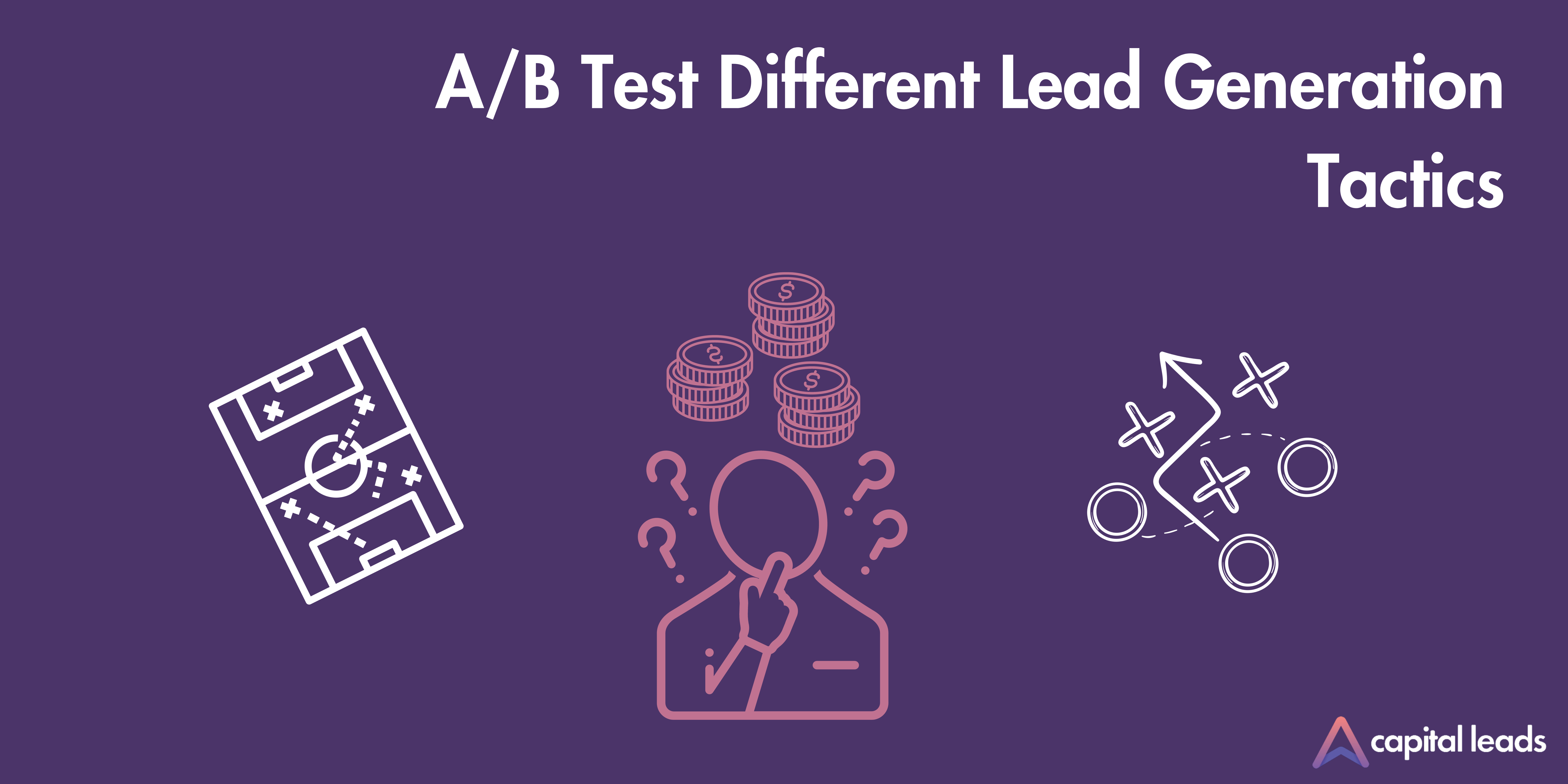
A/B testing, often called split testing, involves comparing two versions of a webpage or ad
to determine which one performs better in terms of generating leads or conversions.
It’s like conducting a mini-experiment.
You present two variants (A and B) to similar audiences
and then measure their performance based on a specific goal, like form submissions or clicks.
The idea is to change one element at a time so you can pinpoint exactly what caused the difference in performance.
Elements you might test include headlines, call-to-action buttons, images, or even the overall design.
The results of A/B testing provide clear data on what resonates most with your audience. This allows you to refine your approach, making sure you get the best results possible from your lead generation strategy.
By continually testing and adapting based on real-world feedback, you can make more informed decisions and improve the efficiency of your lead generation tactics.
Example:
Let’s say you’re promoting solar panels.
You might test two landing pages:
one that emphasises the environmental benefits of solar energy (“Save the Planet with Solar”)
and another that emphasises cost savings (“Slash Your Energy Bills in Half!”).
After running both for a set period, you find that the cost savings message brings in 20% more leads. With this insight, you can focus more on the financial benefits in your future marketing strategy.
Encourage Positive Reviews
Encouraging positive reviews means helping your satisfied customers to share their good experiences with your product or service online.
Many people look at feedback before making a decision. This is where reviews can significantly influence potential customers.
A higher number of good reviews can enhance your business’s reputation, making it seem more trustworthy and credible.
When you engage with reviews, whether thanking someone for a positive one or addressing concerns in a less favourable one, it shows your commitment to customer satisfaction.
Remember, it’s not just about getting positive reviews but genuinely delivering quality to your customers.
When you provide great service, the reviews will naturally follow.
Example:
Imagine you run a solar panel installation business. After a successful installation, you send a short thank-you message to your client with a link directing them to a review site.
In this message, you could highlight the importance of their feedback to other homeowners considering solar energy.
Over time, as positive reviews accumulate, homeowners in your area become more likely to choose your company for solar installations.
Remarketing or retargeting
Remarketing, sometimes called retargeting, is a technique where you show ads to people who have previously visited your website but didn’t make a purchase or sign up.
Think of it as a reminder. When someone browses your site and leaves without taking the desired action, remarketing helps you reach out to them again with ads as they surf other websites, use social media, or search online.
It’s a way to re-engage potential customers and remind them of what you offer.
This strategy is useful because people often don’t buy or sign up the first time they visit a site. By seeing your ads again, they might remember their initial interest and return to complete the action.
Example:
Imagine you own a solar panel company. A homeowner visits your website, reads about the benefits of solar panels, but doesn’t request a quote.
Later, while they’re browsing a news site or social media, they see an ad for your solar panel company. This reminder might be the push they need to revisit your site and get a quote.
Offer Free Tools or Trials
This strategy is where businesses give potential customers a chance to try out their product or service before making a purchase.
It’s like letting someone test drive a car.
This approach builds trust, showcases the value of what you’re offering. This can increase the chances of converting those potential customers into paying ones.
By giving them a taste of what they can expect, they’re more likely to invest in the full experience.
Example:
As a solar panel company you could offer a free online calculator tool that allows homeowners to estimate their potential savings by switching to solar energy.
By inputting their current energy bill and location, the tool gives an estimate of yearly savings.
After seeing these potential savings, a homeowner might be more inclined to get a full assessment or quotation from your company.
Host an Online Event
Hosting an online event means organising a digital gathering,
like a webinar or virtual workshop, where you share knowledge, showcase products, or teach skills.
These events attract people interested in your topic,
and during the event, you can capture their contact details for future marketing.
Attendees benefit by learning something new, while you get a chance to position your brand as an expert in the field.
Example:
You run a solar panel business.
You could host a webinar titled “The Future of Home Energy: Benefits of Solar Panels.”
In this event, you explain how solar panels work, their environmental and financial benefits. On top of that, you can answer common questions.
Attendees, eager to learn about solar energy, sign up using their email addresses.
After the webinar, you will have a list of potential customers who have shown interest in solar panels. You can follow up this list of people with tailored offers or information.
Publish Case Studies
Case studies are detailed stories about how a customer used your product or service and achieved great results.
By sharing these real-life examples, potential customers can see the actual benefits and results of using what you offer. Reading about real success can build trust and show that your solutions genuinely work.
Example:
As you’re in the solar panel business you could create a case study about a homeowner who installed your solar panels. Highlight a significant decrease in their monthly electricity bills.
This case study could be in a few different forms. It could be before-and-after pictures and monthly savings charts. Don’t forget the testimonials from the satisfied homeowner.
Potential customers reading this case study can see the tangible benefits of your solar panels. They might be more motivated to consider them for their own homes.
Connect with Prospects Using Social Media
Social media platforms, like Facebook, Instagram, and Twitter, are great places to interact with potential customers.
By sharing updates, answering questions, and showcasing what you offer, you can build a community and attract people to your business.
It’s a relaxed way to inform and engage with people who might be interested in your products or services.
Example:
If you sell solar panels, you could use Instagram to post photos of successful installations. Share stories of families saving money or reducing their carbon footprint.
Engaging in the comments, answering questions about the benefits of solar energy, and sharing testimonials can help potential customers feel connected and more inclined to choose your solar solutions.
Create a Referral Program
A referral program is a way to encourage your current customers to recommend your products or services to others.
In exchange for their recommendation, you offer them a reward. It’s like saying “thank you” with a gift.
This helps spread the word about your business and brings in new customers based on the trust and experience of current ones.
Example:
Imagine you run a solar panel installation business. You could offer your existing customers a discount on their next service.
Or, a cash reward for every friend or neighbour they refer who ends up buying solar panels from you.
This way, your satisfied customers become advocates for your business. They will share the benefits of solar energy with others and help you grow.
Lead Generation Best Practices
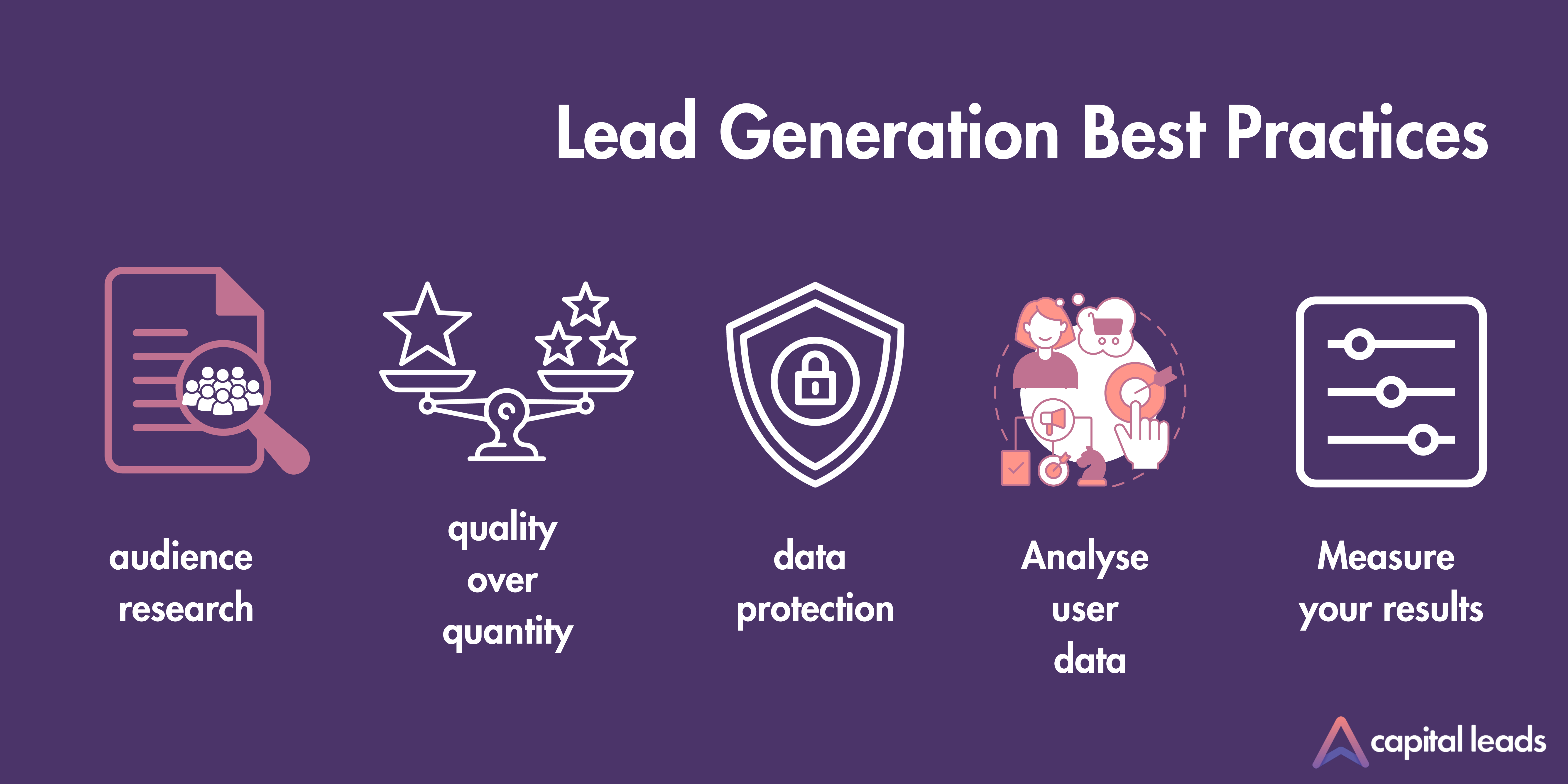
Generating leads is vital for any business to thrive. It’s the process of attracting potential customers and getting them interested in what you offer.
However, not all lead generation methods are created equal. To ensure you’re reaching the right people in the most effective way, it’s essential to follow best practices.
These tips below will help streamline your strategy,connecting you with quality leads while using your resources wisely.
Perform audience research
Get to know the people you want to target.
Understand their preferences, behaviours, and needs.
This way, you can create messages and offers that truly resonate with them.
Focus on quality over quantity
It’s not about how many leads you get, but how good they are.
A few well-targeted leads can be more valuable than a large number of less relevant ones.
It’s better to reach people who are genuinely interested in your product or service.
Use data responsibly
Always handle personal information with care. Make sure you have permission to use it, keep it secure, and respect privacy laws.
Trust is crucial, and you don’t want to lose it by mishandling data.
Analyse user data
Look at the information your leads provide. This can give you insights into what they’re looking for and how you can serve them better. It’s like reading a guidebook about what your audience wants.
Measure your results
Always track how well your lead generation efforts are working. This helps you understand what’s effective and what’s not.
By keeping an eye on your results, you can adjust your strategies and continually improve.
Conclusion
Effective lead generation is crucial for growing any business.
By implementing the best practices and strategies, you position your company to attract more quality leads and turn them into loyal customers.
Remember, it’s all about reaching the right audience and offering them value.
At Capital Leads we use a multi-platform approach for lead generation. We specialise in generating top-quality, validated leads for industries like solar, business loans, and superannuation.
Ready to elevate your lead generation game? Get Started today!



